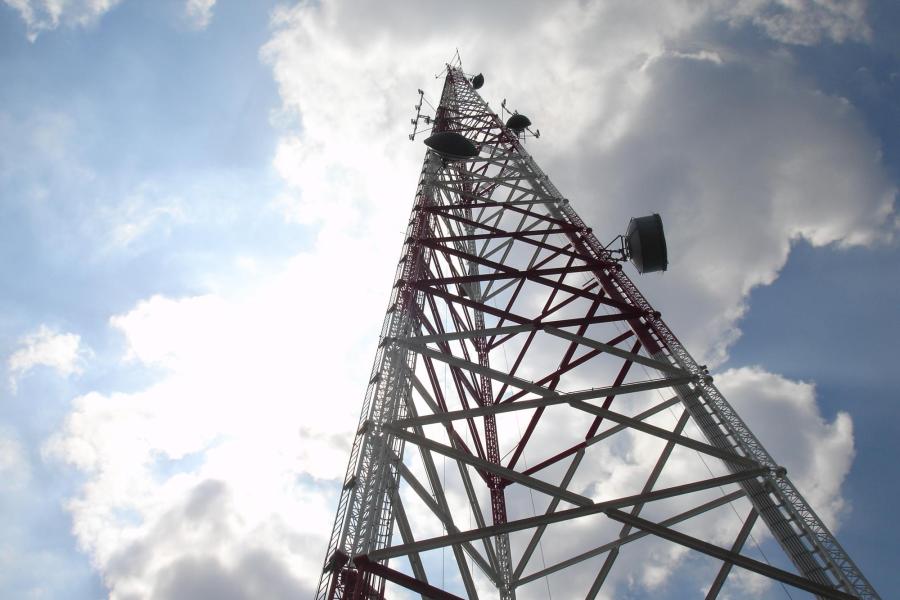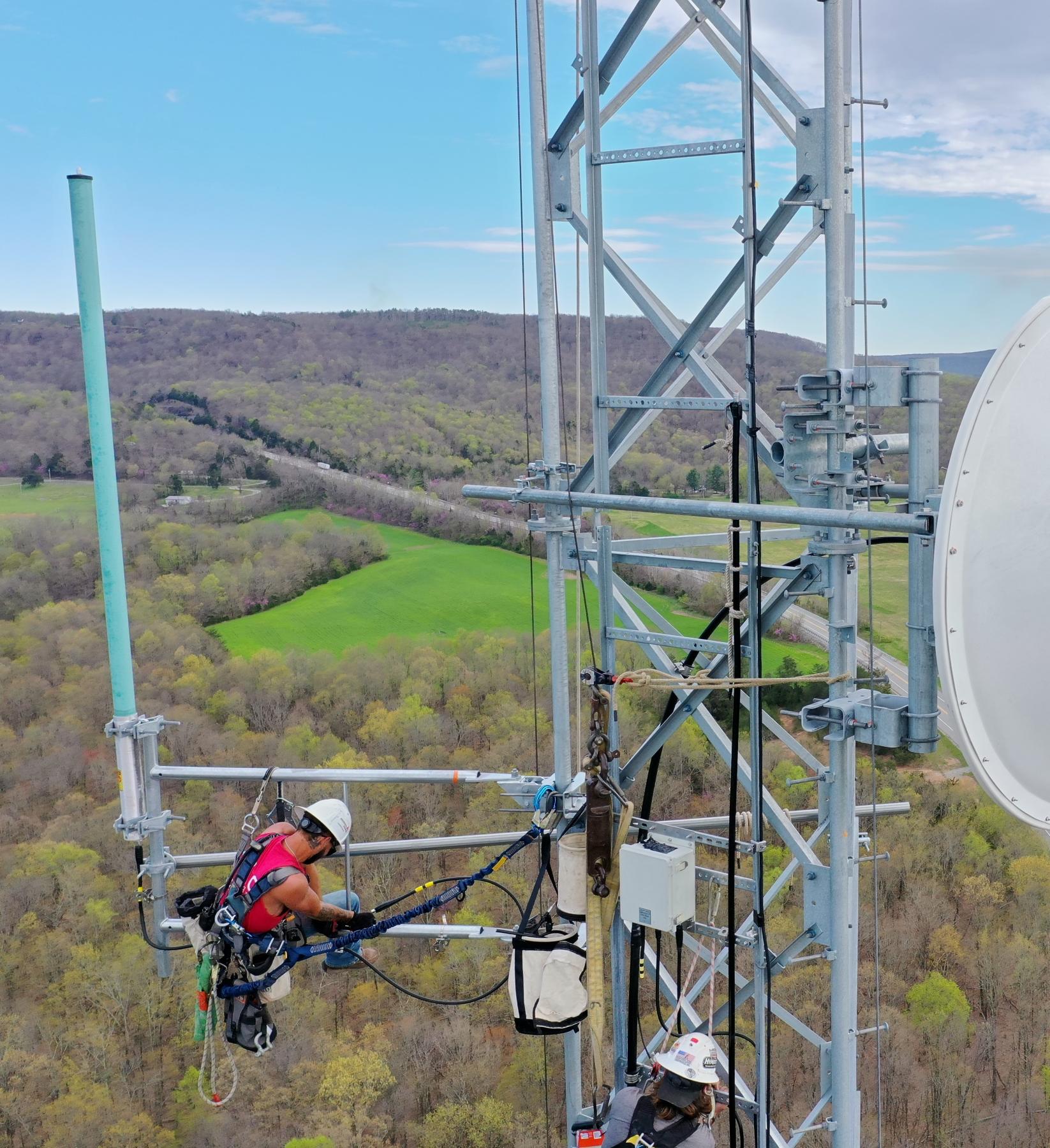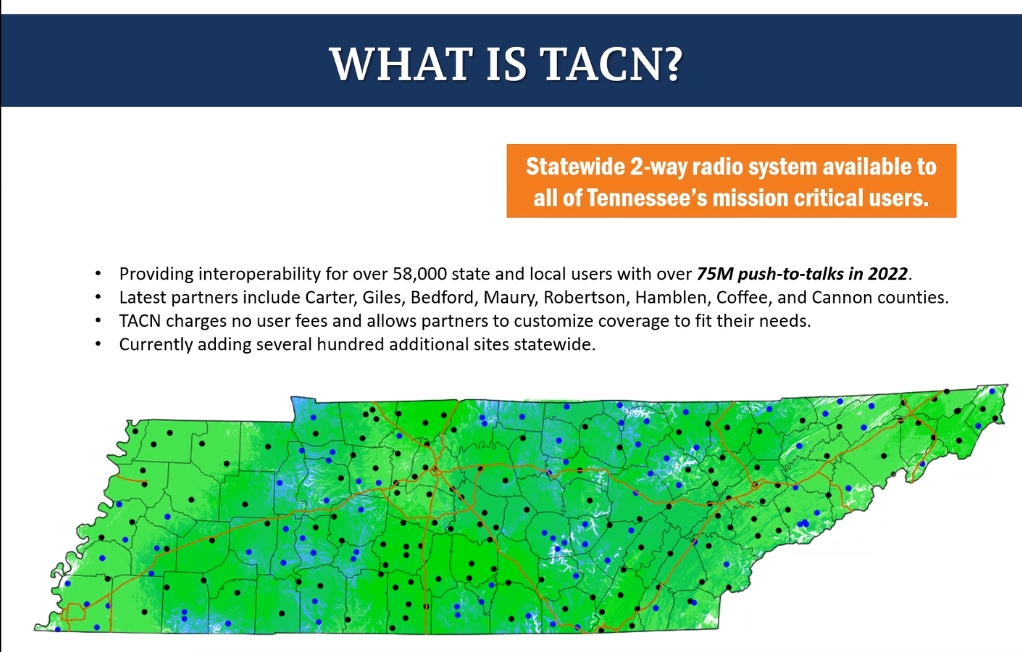TACN aims to ease emergency communications across agencies

By KATE COIL
TML Communications Specialist
From natural disasters to mass casualty events to search and rescue operations, emergency response efforts need reliable communication channels to coordinate their efforts when seconds count.
The Tennessee Advanced Communications Network (TACN) provides mobile and fixed radio transmission sites in both urban and rural areas, allowing law enforcement, fire, EMS, healthcare providers, and other first responders to maintain real-time contact both in the event of disaster and for their day-to-day operations.
The third phase of build-out for the network is presently underway, and TACN Director Jeff Gray said work is being done to ensure as much of the state is covered as possible, allowing responders on all levels to better work together.

“Really the goal is to make things more efficient and make sure responders are not caught off guard,” Gray said. “One of the frustrations I hear a lot of the time is that they can see other responders but can’t talk to them. We are building out this coverage for this state, but as we do so the benefit of those towers will be for local agencies, too. As we do this build out, there will be access in other communities too.”
In the wake of incidents like 9/11 and Hurricane Katrina, emergency and security officials across Tennessee and the nation knew that communications infrastructure improvements needed to be made both to keep up with modern technology and to better equip first responders at all levels for better response to emergency incidents.
Under Gov. Phil Bredesen, a study was commissioned in 2008 that estimated the state of Tennessee would need 355 radio tower sites across the state as well as a compatible radio system linking local, state, and national responders to provide reliable communication coverage. Construction on this network began in 2011, and since then, the communication network has proved a valuable resource during incidents such as the 2015 terrorist attack on Chattanooga, the 2016 Gatlinburg wildfires, the Christmas Day bombing of downtown Nashville in 2020, and in response to various tornadic events across the state.
As buildout has progressed, Gray said adjustments have been made to the initial plan and only around 320 towers will be needed with 104 already in place. At present, the agency is working on securing property agreements allowing them to build towers with a few dozen sites still being negotiated, many of which are on properties owned by other state agencies. Other towers are located at locally-owned and operated emergency operations sites.
“If local partners want to come on to the network, they can look at the statewide plan and see how that overlays with their needs locally,” Gray said. “They can certainly add towers if they desire at their expense. We are not forcing anyone to do this. We want it to be interagency operable so if we have an incident where a local agency needs to talk with highway patrol. That is the intent, to get the global coverage and interoperability plan so everybody can talk. We can expand the coverage if a local partner wants to come on and add to that coverage as well.”
Tennessee’s geography and terrain has played some role in deciding where to place towers. Some areas of the state need more towers to provide the same amount of coverage.
“We have the same challenges that cell companies do in that all radios rely on line-of-sight,” Gray said. “You have to be high enough to see over a ridge or into a valley in order to effectively operate. East Tennessee has proven a little more challenging while West Tennessee is a little more flat, so it’s not as difficult to cover that area in most places because the tower can see further. There isn’t as much tower density in the west side of the state as there is in the east side of the state because we can get better coverage with the topography. It depends on the height of the tower and the terrain on how far that tower reaches. We kind of plan to have towers within 15 miles of each other, but out west that could be double.”
Gray said a lot of the focus has been on ensuring there is coverage in areas where multiple jurisdictions are most likely to interact.

“We are focusing our coverage needs on the interstates, major highways, and our state parks where we do a lot of multi-agency response there with state and local responders,” he said. “We also have in major population centers where there is more of a need. We are now looking at those white spaces and figuring out where would be the best place for us to ensure we get coverage in that blank area that we can get. We know that you can’t eliminate all white spaces. A mobile radio has a lot more power so it’s easier to cover that area whereas a global radio in a vehicle has more power. We are trying to build out critical coverage in those white spaces.”
As the third phase is in progress, Gray said studies are being completed and plans finalized with the goal of construction of the first wave of new towers beginning in September. As more agreements are finalized and prep work is done, he said tower construction will progress quarter-by-quarter.
One thing local agencies need to do is ensure they purchase radios that are compatible with the system. Gray said many agencies opt for cheaper systems that do not offer options that are quickly becoming the standard for emergency communications, which can leave them out of the loop when trying to work with state or other agencies.
“We can build out all the towers, but it doesn’t work if they don’t have the radios that are compatible,” Gray said. “There is still going to be the long-term challenge because not everyone will have the money to buy the radios that is compatible with the infrastructure. When they do, they won’t have to pay for the infrastructure because it’s already been built out. It is really challenging when the local department arrives and can see the trooper but can’t talk to them. We encourage local agencies to start thinking about how they want to participate or how they can potentially allocate funds for radios.”
Having knowledge of incident command structure and other strategies for working with other agencies are also valuable for ensuring the communication infrastructure works as intended.
“Local responders are often first on scene, and this network can help them stay connected as more agencies come on scene and that incident command system is built up,” Gray said.
Gray encourages local leaders to learn more about how they can participate in the network. Local agencies who want to know what resources are available to them or want to learn more about being a part of the network can contact TACN online.

